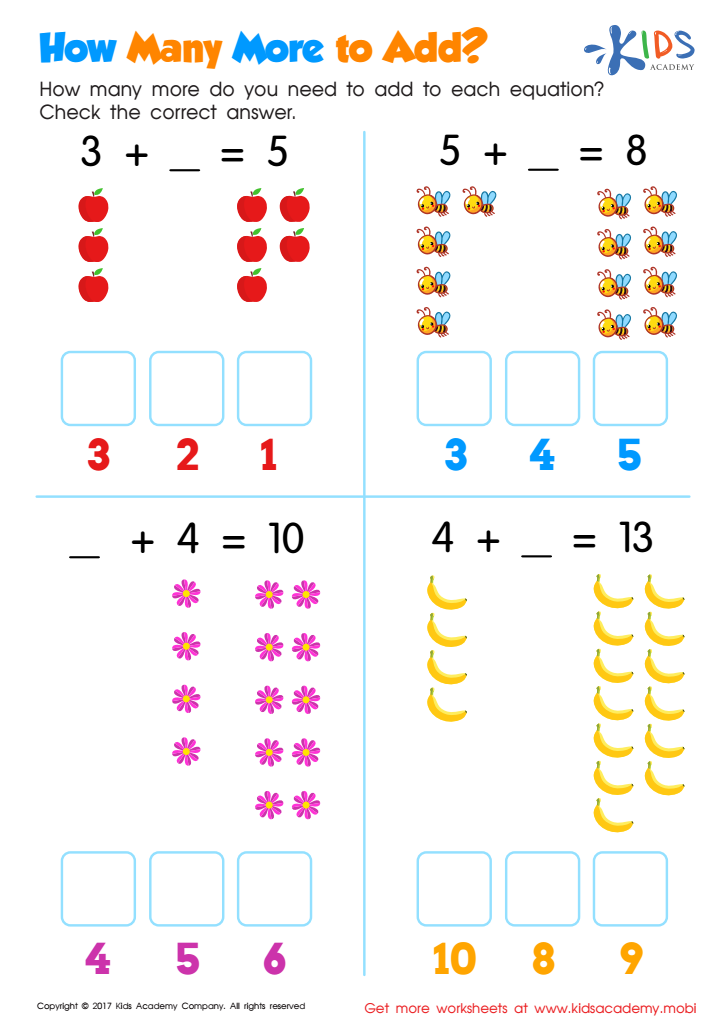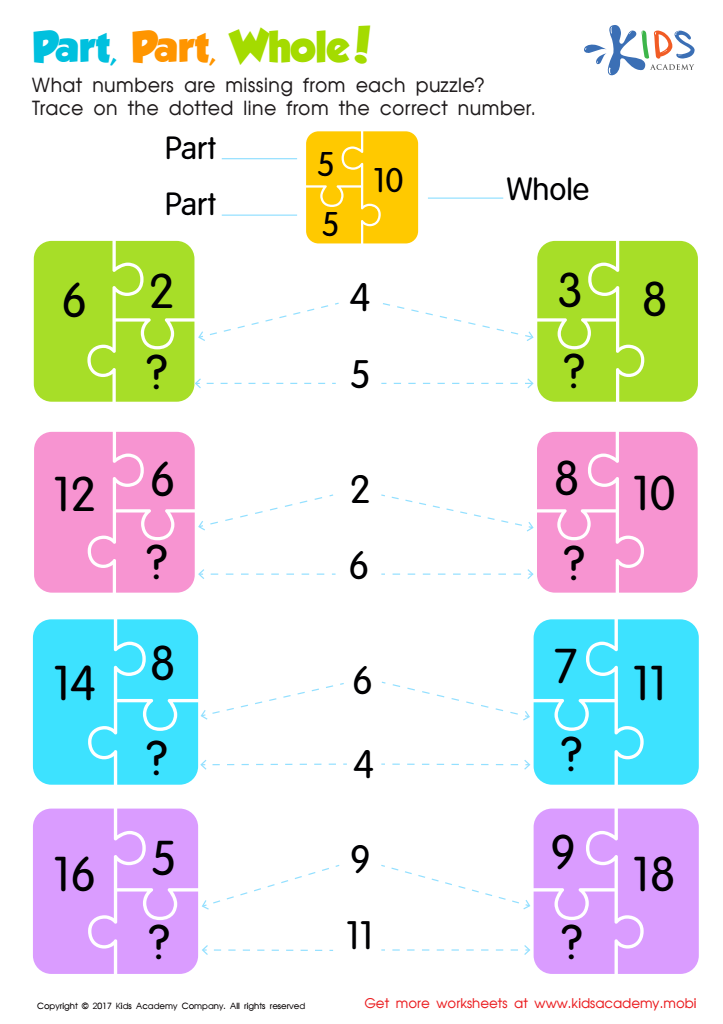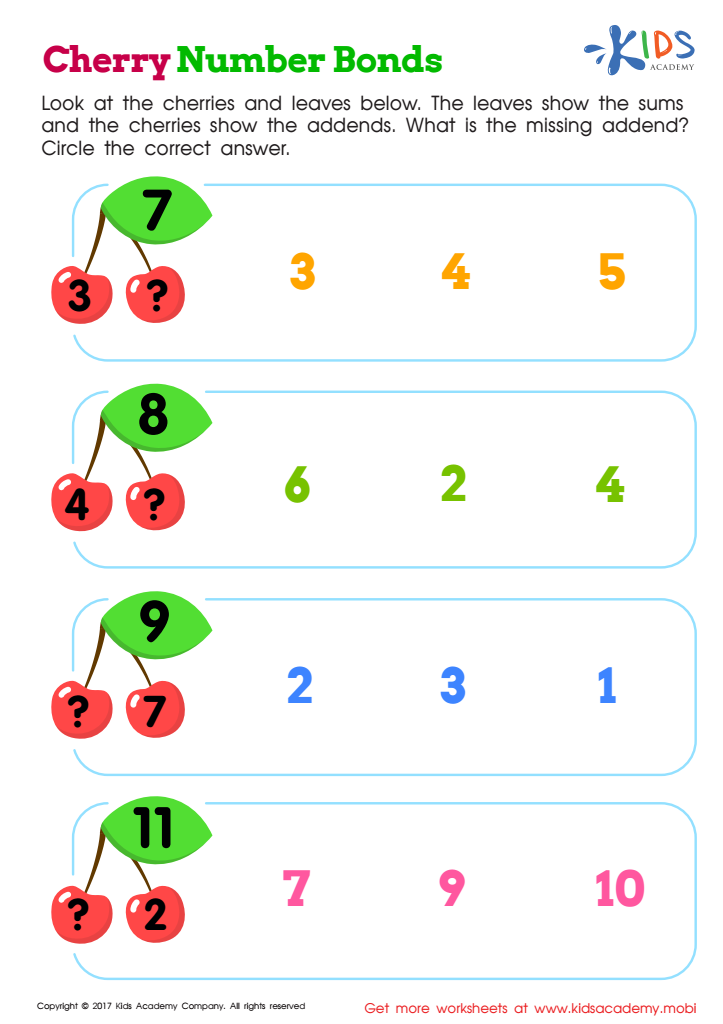Using Unknown addend problems to help with Subtraction - Lesson for Grade 1, Chapter - Thinking Deeper about Addition and Subtraction—The Unknown Number
In this engaging lesson titled "Using Unknown Addend Problems to Help with Subtraction", first-grade students will dive into the intriguing chapter of "Thinking Deeper about Addition and Subtraction—The Unknown Number". This lesson is part of the larger unit on "Applications in Operations Within 100", where students explore the depths of addition and subtraction in a variety of contexts.
Through a series of thoughtfully designed activities such as "Finding the Unknown Number", "How Many More to Add Worksheet", "Part, Part, Whole Worksheet", and the "Cherry Number Bonds Worksheet", students will learn to identify and solve unknown addend problems. This is a foundational skill that enhances their understanding of how addition and subtraction are interconnected. By recognizing that an unknown addend problem is essentially a subtraction problem waiting to be solved, students will begin to see arithmetic operations in a new light.
This lesson is crucial as it builds a strong arithmetic foundation, fostering students' problem-solving skills and their ability to think critically about numbers. Mastering the concept of unknown addends assists in developing flexibility in thinking about numbers, an essential skill for future mathematical success.

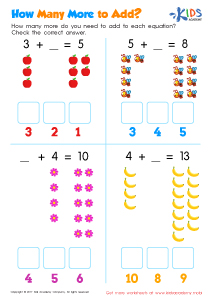
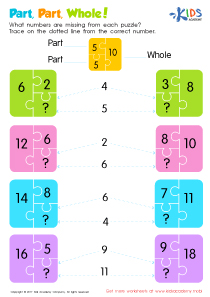
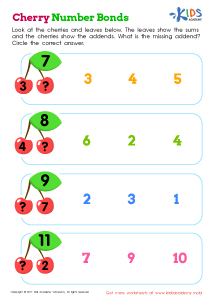
-
Activity 1 / Finding the Unknown Number
-
Activity 2 / How Many More to Add Worksheet
Sharpen your child’s addition and subtraction skills with the pdf worksheet. How many more apples, bees, flowers and bananas do you need to arrive at the figure provided? The possible answers to the unfinished math are provided at the bottom of the boxes. All you need to do with your child is do some quick addition and subtraction magic, and you can have some fun learning maths.
-
Activity 3 / Part, Part, Whole Worksheet
Working together with your child, carefully look through the page and figure out the numbers that are missing from each puzzle provided. This tracing sheet allows your child to combine the fun of solving puzzles with the brain stimulating task of adding and subtracting numbers. The colorful pages in the worksheet will keep your child engaged in the activity, and the simple maths will keep the fun in learning.
-
Activity 4 / Cherry Number Bonds Worksheet
Looking through the worksheet with your child, you will notice that the cherry leaves have some numbers on them. The numbers on the leaves are the total of the addition of numbers on the cherries. There is one problem, though; one of the two numbers is missing. Assist your child to figure out which of the numbers on the right side is the correct one to make up the equation.
